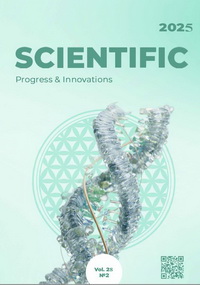Features of seasonal dynamics of eimeriosis in chickens
DOI:
https://doi.org/10.31210/spi2025.28.02.37Keywords:
parasitology, chickens, eymeriosis, seasonal dynamics, invasiveness ratesAbstract
Protozoa of the genus Eimeria are pathogens that cause a dangerous disease called eimeriosis, which causes significant losses to poultry farming due to high mortality of young birds. In chickens, Eimeria is localized and multiplies in the epithelial cells of the intestinal mucosa, which leads to specific clinical symptoms such as enteritis, exhaustion, dehydration, mainly in chickens, and a decrease in growth rate and productivity in adult laying hens. Due to the high stability of Eimeria oocysts in the external environment and their ability to survive for a long time, eimeriosis is a widespread invasion in the world, especially in farms with floor-based housing technology. The aim of the work was to establish the features of the seasonal dynamics of eimeriosis in chickens in private farms of the Poltava region. The study of birds was carried out by quantitative detection of Eimeria sp. oocysts every month during the year, and indicators of the extensiveness and intensity of eimeriosis invasion were established. The conducted coproovoscopic studies have established that starting from the winter period, the indicators of the extensiveness and intensity of eimeriosic invasion in chickens gradually increase and are in winter – 12.78 % and 726.78 oocysts/g, in spring – 32.22 % and 859.98 oocysts/g, in summer – 47.78 % and 966.93 oocysts/g and reach maximum values in autumn – 52.22 % and 1316.06 oocysts/g, respectively. In terms of months during the year, the peak of eimeriosic invasion was established during September-October, where the indicators of extensiveness and intensity of the invasion were 60.0–63.33 % and 1388.97–1461.87 oocysts/g, respectively. The minimum indicators of extensiveness and intensity of eimeriosic invasion were established during December-February – 10.0–13.33 % and 564.11–735.13 oocysts/g, respectively. In other months, the indicators of extensiveness and intensity of eymeriosic invasion ranged from 18.33 to 56.67 % and from 775.36 to 1126.52 oocysts/g, respectively. The obtained data allow us to take into account the peculiarities of seasonal dynamics of eymeriosis in chickens when planning therapeutic, preventive and diagnostic measures in private farms of the Poltava region with floor-based housing technology.
Downloads
Published
How to Cite
Issue
Section
License
Copyright (c) 2025 Scientific Progress & Innovations

This work is licensed under a Creative Commons Attribution 4.0 International License.

 Creative Commons Attribution 4.0 International Licens
Creative Commons Attribution 4.0 International Licens